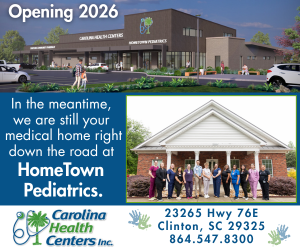South Carolina Society of Ophthalmology urges solar eclipse enthusiasts to take precautions
August 19, 2017With the solar eclipse fast approaching, people across South Carolina are making plans to experience the remarkable occasion on Monday.
But with that excitement comes the need to focus on eye safety and take the necessary steps to prevent retinal damage. Since South Carolina will experience the total eclipse, the importance of people taking precautionary steps to protect their eyes is even greater.
Respected retinal specialist and South Society of Ophthalmology Past President John. A Wells, III, M.D., said the safest way to experience the eclipse is by viewing it indirectly.
“The 20 percent [of the sun] that you will still be able to see while looking at the eclipse is going to be enough to cause permanent damage,” Wells said. “The safest way to see it is by looking at an indirect image of the eclipse on the ground.”
Wells said this can be done by taking a piece of paper with a hole punched out and letting the sun pass through it onto the sidewalk. As an alternative, Wells said people can interlace their fingers like a “waffle-weave,” which would cast multiple squares onto the ground that would be eclipsed.
For those wanting to view the eclipse directly, people can use special filters, but Wells cautioned that only a few reputable companies – American Paper Optics, Rainbow Symphony, Thousand Oaks Optical and TSE 17 – are producing glasses that are truly safe enough to use according to the American Academy of Ophthalmology. With reports showing those glasses are quickly flying off the shelves, Wells said an alternative safety option for direct viewing would be No. 14 welder’s glass, also recommended by the AAO. Likewise, those wanting to photograph or take a video of the event will need to ensure they use proper lens filters.
“Not only do we have to make sure the filters are coming from reputable sources,” Wells said, “but if there is a scratch or dot in the filter that allows light to come in, you will not get adequate protection and should not use them.”
Without protection, permanent damage to the retina as a result of looking directly into the sun, referred to as solar retinopathy, can occur within a minute. The damage is also cumulative, meaning physical wear on the eye from looking into the sun builds up over time.
“If you look into the sun for 10 seconds and then look away, it is not a case of the clock starting over,” Wells said. “It is a photochemical reaction. Once you look at it directly, the damage is already done and it will build from there if you look into it again.”
Since the retina does not have nerve fibers, people will not feel pain from the sun, causing those who stare directly into to ignore potential damage. While typically people do not go blind from staring directly into the sun, it can cause a severe loss of central vision. In addition to solar retinopathy, damage to the cornea can occur, referred to as keratopathy.
If people experience discomfort from viewing the solar eclipse, Wells recommends they see their ophthalmologist immediately.
“The best people to help them are ophthalmologists because of the medical care they can provide,” he said. “As a retina specialist, I know what to look for. And thankfully with special equipment such as an OCT [Optical Coherence Tomography] machine, it is a diagnosis that is hard to miss.”
For more information and to find an ophthalmologist, visit sceyemdeye.org.
About the South Carolina Society of Ophthalmology
The South Carolina Society of Ophthalmology is one of the nation’s most recognized and nationally acclaimed State Eye Societies comprised of Eye Physicians and Surgeons specializing in the medical eye practice area of ophthalmology. The South Carolina Society has been recognized repeatedly for its Patient Advocacy programs and its State Physician Leadership, and its Executive Director has received multiple National Awards of Excellence from the American Academy of Ophthalmology.
About the American Academy of Ophthalmology
The American Academy of Ophthalmology is the world’s largest association of eye physicians and surgeons. A global community of 32,000 medical doctors, we protect sight and empower lives by setting the standards for ophthalmic education and advocating for our patients and the public. We innovate to advance our profession and to ensure the delivery of the highest-quality eye care. Our EyeSmart® program provides the public with the most trusted information about eye health. For more information, visit www.aao.org


















